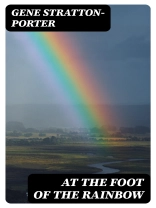In the novel ‘At the Foot of the Rainbow’ by Gene Stratton-Porter, readers are taken on a poignant journey through the lives of two families in a small Midwestern town. The story beautifully captures the essence of love, loss, and the human experience against the backdrop of the early 20th century. Porter’s prose is lyrical and evocative, drawing readers in with vivid descriptions and heartfelt emotions. The novel is a timeless piece of American literature that explores themes of redemption, forgiveness, and the interconnectedness of humanity. Through the characters of ‘At the Foot of the Rainbow, ‘ readers are reminded of the power of love and the resilience of the human spirit. Gene Stratton-Porter, known for her deep connection to nature and her advocacy for conservation, infuses the novel with a sense of environmental awareness and appreciation for the natural world. Her own experiences as a naturalist and writer inform the rich storytelling and thematic depth of the book. ‘At the Foot of the Rainbow’ is a literary gem that will resonate with readers who appreciate heartfelt storytelling, nuanced characters, and a deep exploration of the human condition.
Sobre o autor
Gene Stratton-Porter (1863–1924), born Geneva Grace Stratton, was a prolific American author, naturalist, and nature photographer who left an indelible mark on early 20th-century literature. Grounded in the lush landscapes of the Limberlost Swamp, Indiana, her literary work reflects a passionate engagement with the natural world and a deep concern for the conservation of American wilderness. Stratton-Porter’s novels often emphasize themes of individualism, environmental awareness, and the value of living in harmony with nature. Notably, ‘At the Foot of the Rainbow’ (1907), while dealing less directly with naturalist themes, showcases her narrative richness and her exploration of human emotions against taut backdrops of rural America. Like many of her other novels, including ‘A Girl of the Limberlost’ (1909) and ‘Freckles’ (1904), her storytelling weaves together the lives of characters with authentic depictions of the transformative power of nature. Stratton-Porter’s contributory role in early environmental literature and her portrayal of dynamic female characters were ahead of their time, earning her a legacy that remains significant in literary conversations regarding the intersection of ecology and fiction. Her literary style, characterized by vivid description and emotive prose, endeared her to readers and undergirded her reputation as a champion for the preservation of the American wilderness.












